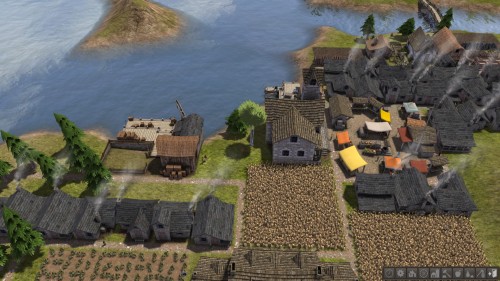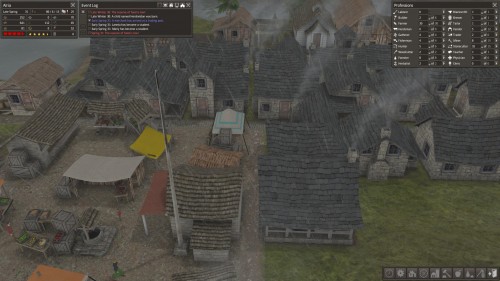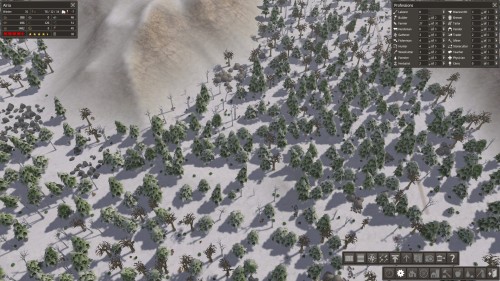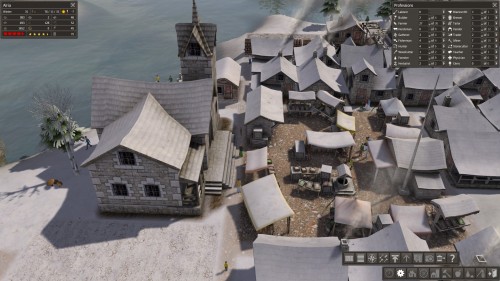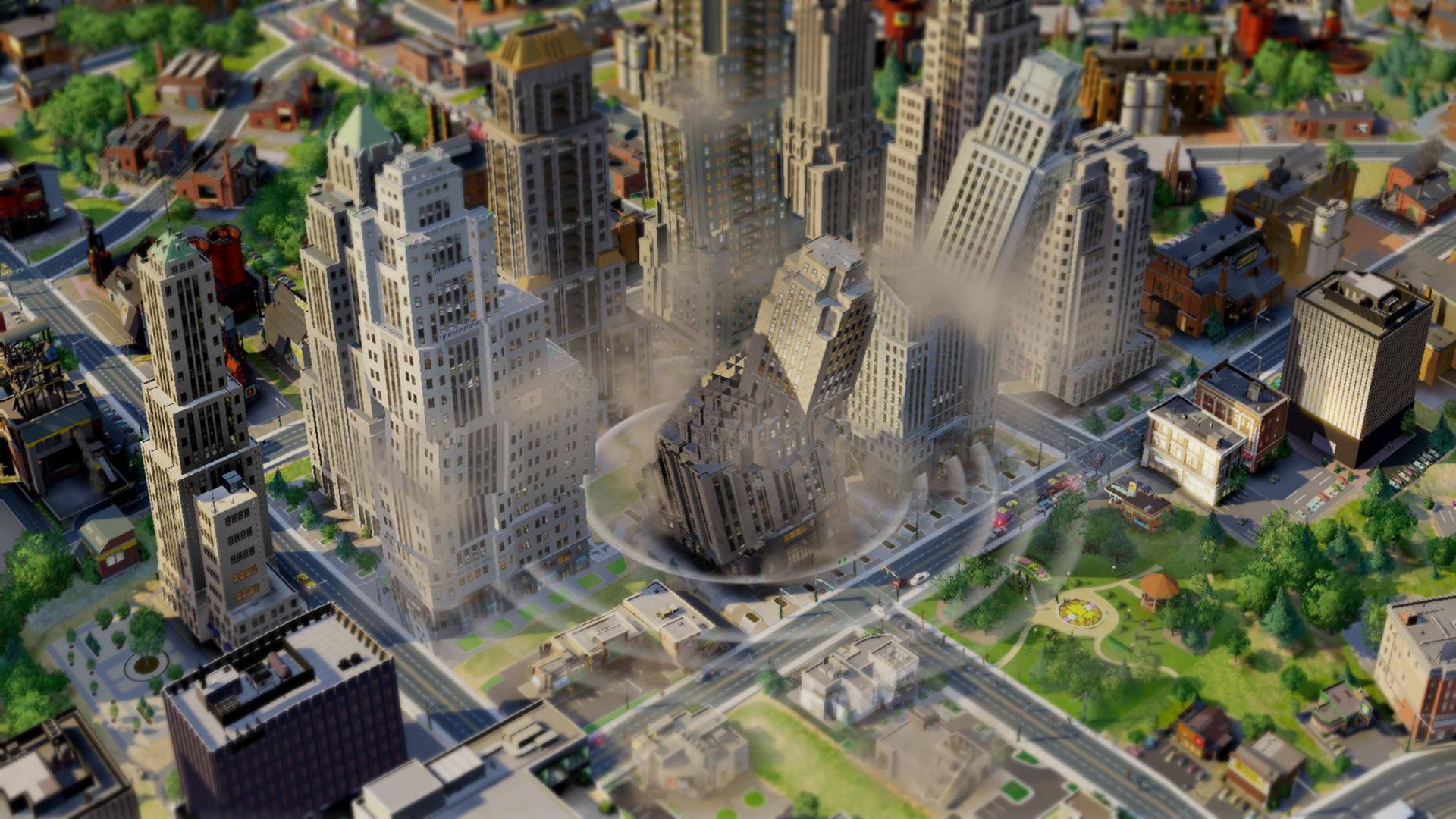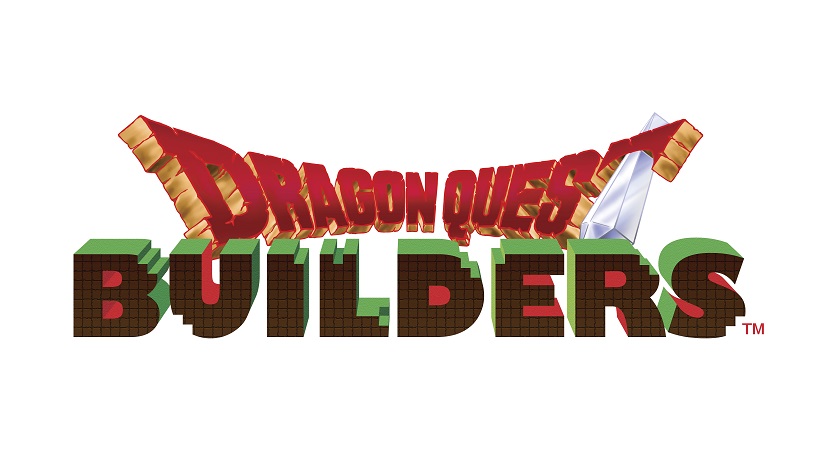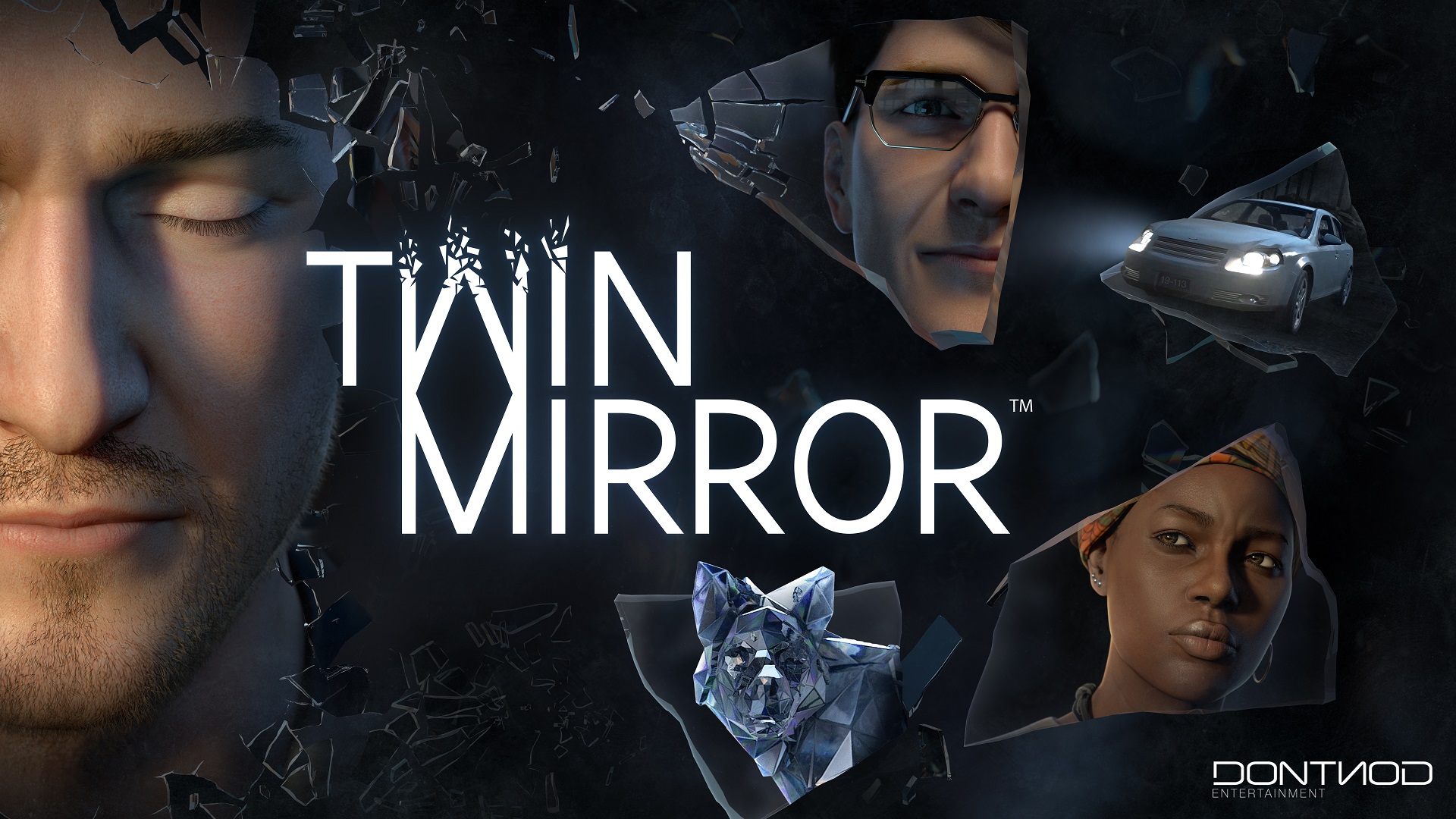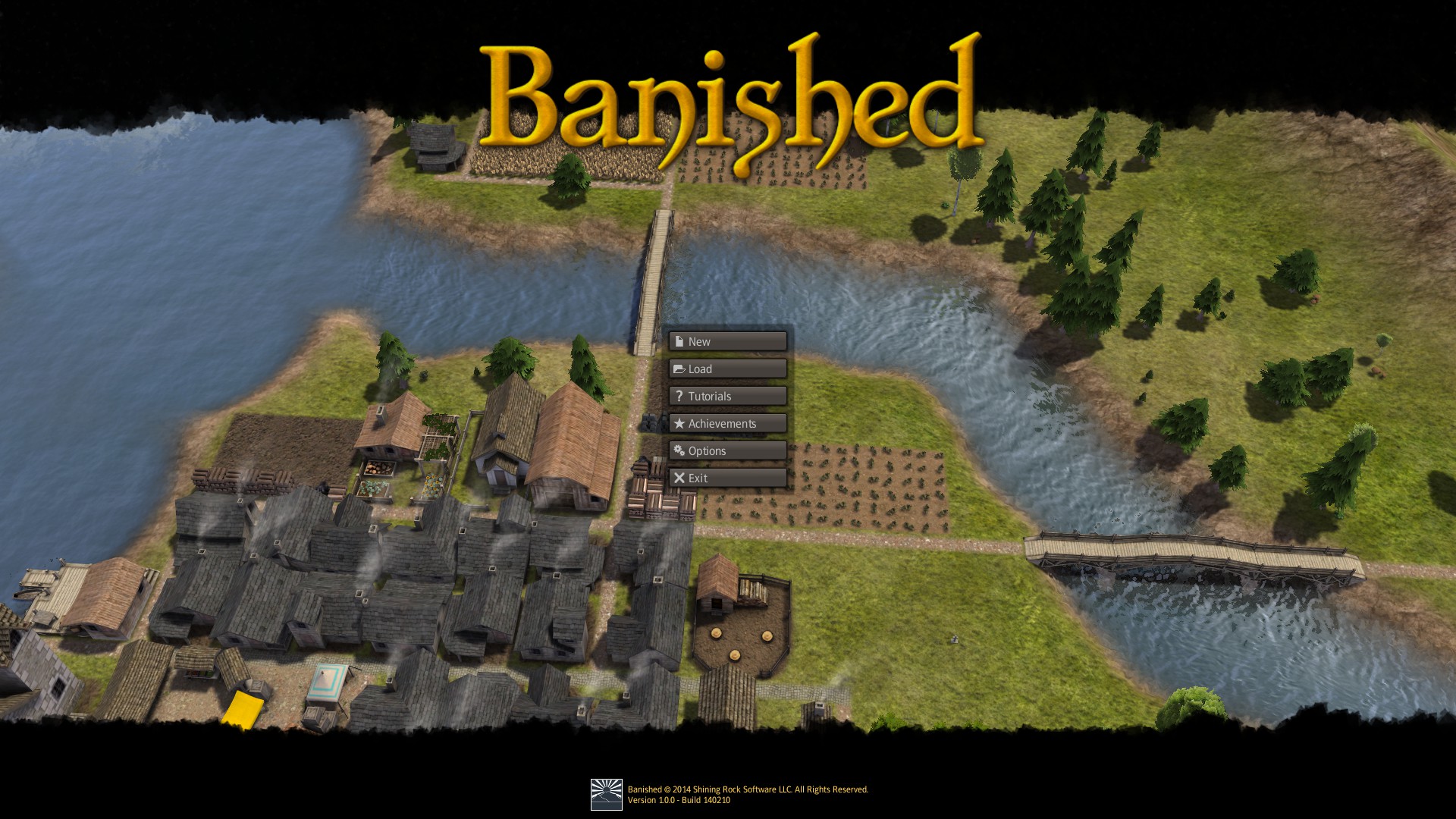
For me, there’s something incredibly enjoyable about games that focus on building and managing a town or city. The SimCity series scratched this itch for many years, but last year’s disappointing reboot left a bitter taste in my mouth.
So whenever a game comes along that offers the management of a town, my ears always perk up. Banished, from one-man indie studio Shining Rock Software, had me interested due to its strict focus on maintaining an isolated community and ensuring the people of that community survive.
The game offers no tech trees, and you don’t need to reach milestones with your town in order to use particular buildings. Everything is available from the start, assuming you have the resources to run it.
The premise is that you’re in charge of a group of people who have been banished from their lands, and must make a new start in a harsh wilderness. Maps are procedurally generated, meaning you’ll never see the same map twice (however there are seeds you can use as a basis to generate a map).
Success in Banished comes not from making huge amounts of an in-game currency or from conquering opposing territories, but rather from ensuring your villagers can survive. Your first order of business is to get everyone housed and fed. Be warned, however, because your people are a randy lot, and immediately on putting them in housing, they’ll start producing children, who also need to be fed.
In order to get all this to happen, you need to manage your population’s jobs. You do this through the Professions window, which is the main window you need to interact with your citizens through the game. Most buildings in the game require people to operate them, and usually they have a requirement for more than one to operate at maximum efficiency. Once assigned, citizens will work at a job until they die.
Once you have your food and resource gathering economy set up, the temptation is to start expanding. This is where the game’s true challenge begins. Expanding too fast will result in a population boom that will rapidly strain your food and firewood supply, and you’ll find many villagers starving or freezing to death in the harsh winter, when your farmers can’t produce food.
On the other hand, don’t expand fast enough, and your population won’t grow, and while you might do well for several years, eventually you’ll start losing people to old age all at once, without children coming up to replace them. The key, then, is to grow at a rate that allows your villagers to keep producing children while also not producing too many. A careful balance that provides the core of Banished’s challenge.
If you’re managing the village right, you’ll find that there’s always something to do. As the years wear on, you’ll find that you have a steady stream of villagers dying of old age, while new young adults grow up to replace them. As people die off, their houses become empty, and young people will move in to fill them up.
There’s a number of nice conveniences in Banished that help a town to work. For a start, villagers are generally assigned to houses near to where they work, reducing the time they have to travel to get to work, allowing them greater efficiency. Houses also never overfill, so you’ll never have a situation where population growth can’t be easily controlled. Stone houses increase the limit of people in a house while reducing its demand for firewood, which is helpful.
There’s also the boarding house, a large building that can hold a lot of people. This makes a surprisingly good early game strategy, as it allows population growth without also needing to continually build houses. This can benefit resource production in the long run, for a moderate increase in early-game resources. The boarding house also becomes important once the town hall is built, as nomads will start asking to join your village.
Nomads can be a blessing and a curse. If you’ve just struggled through a particularly harsh winter and lost a number of citizens, then repopulating with nomads in the spring can be really helpful. Of course, nomad arrivals occur randomly, so you may not have this option. On the other hand, adding nomads to a thriving village can be enough to push it over the edge, and you’ll soon find yourself with many starving citizens. Again, the game’s focus on balancing growth with survival comes into play.
Once you build the trading post, merchants can arrive by boat in your village. Merchants offer food, seeds and livestock that you can’t otherwise get, allowing you to increase the variety of foods available to your villagers. Livestock in particular can only be acquired in this manner (unless playing on the easiest difficulty). Pigs provide a steady source of meat, while cows provide meat, leather and milk. Chickens provide eggs and meat, but sheep are perhaps the best option if you can get them: they provide meat and wool with which you can make wool jackets for your citizens.
As it currently stands, Banished is fun, but not without its flaws. There’s no overriding goal or progression in the game beyond managing the growth and survival of your town. This is great on the one hand, and sets a sedate, rewarding pace for the game. On the other hand, however, it does mean that there’s not a huge amount to do other than expand and manage. Upgrade options are limited to stone houses and roads, and not much else.
Another problem is that there’s situations where the death of a single citizen can lead to huge problems if they can’t be replaced. This is especially true of teachers, who educate children and make them into more efficient workers once they grow up. If a teacher dies, all the students at the school house instantly become uneducated labourers, regardless of age. While this means an instant pool of fresh employment, it also makes it difficult to have a completely educated workforce. It would be nice if the game would allow all uneducated labourers back to school if they’re between 10 and 18 years old.
Visually, Banished looks great. The artwork is crisp and detailed, and buildings are always designed in such a way as you can tell what’s going on with them. Forests are lush and green, and the winter snowscapes capture the feel of a harsh frontier. The game also has excellent music and sound design, with audio feedback allowing you to know what’s happening with your village no matter where you have your camera parked.
Banished feels like a game from another time. One part SimCity, one part Don’t Starve and one part Minecraft, the sedate pacing and lack of any overall goal harks back to early sim games like the original Simcity, or even titles like M.U.L.E. This is the kind of game you can easily lose hours in without much effort. Sometimes, just sitting back and watching things happen is as enjoyable as interacting with it. Hell, there isn’t even a tutorial to get you started (there is, thankfully, an extensive and well-written in-game manual).
This won’t be a game for everyone, but for those who need their particular survival-focused sim game itch scratched, it’s as perfect a game as there’s been in recent times. That it was all made by a single guy just makes it that much more impressive. I really like this game, and I’m really looking forward to see where Shining Rock Software takes it in the future.
Well-crafted town building simulation
Focus on survival in a harsh environment offers up a new challenge in the genre
Lack of any advancement or tech progression
The game's sedate pacing will frustrate some players

